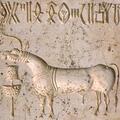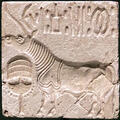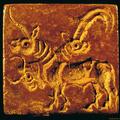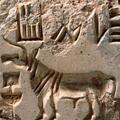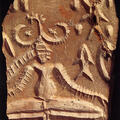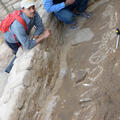Seals and Sodalities
"Thus the main motifs of the seal tablets emphasize two cultural phenomena. The first is that there was a rich mythopetic basis for the use of these motifs. The second is that the main motifs emphasize pan-settlement relationships, i.e. something held in common by the society at large, namely, the sodality to which the individual belonged. In contrast, we can assume that the Harappan writing identifies the indivudual who bears the seal tablet since the sign order is rarely duplicated. Here then is a clue to the meaning of the writing as it appears on seal tablets.

